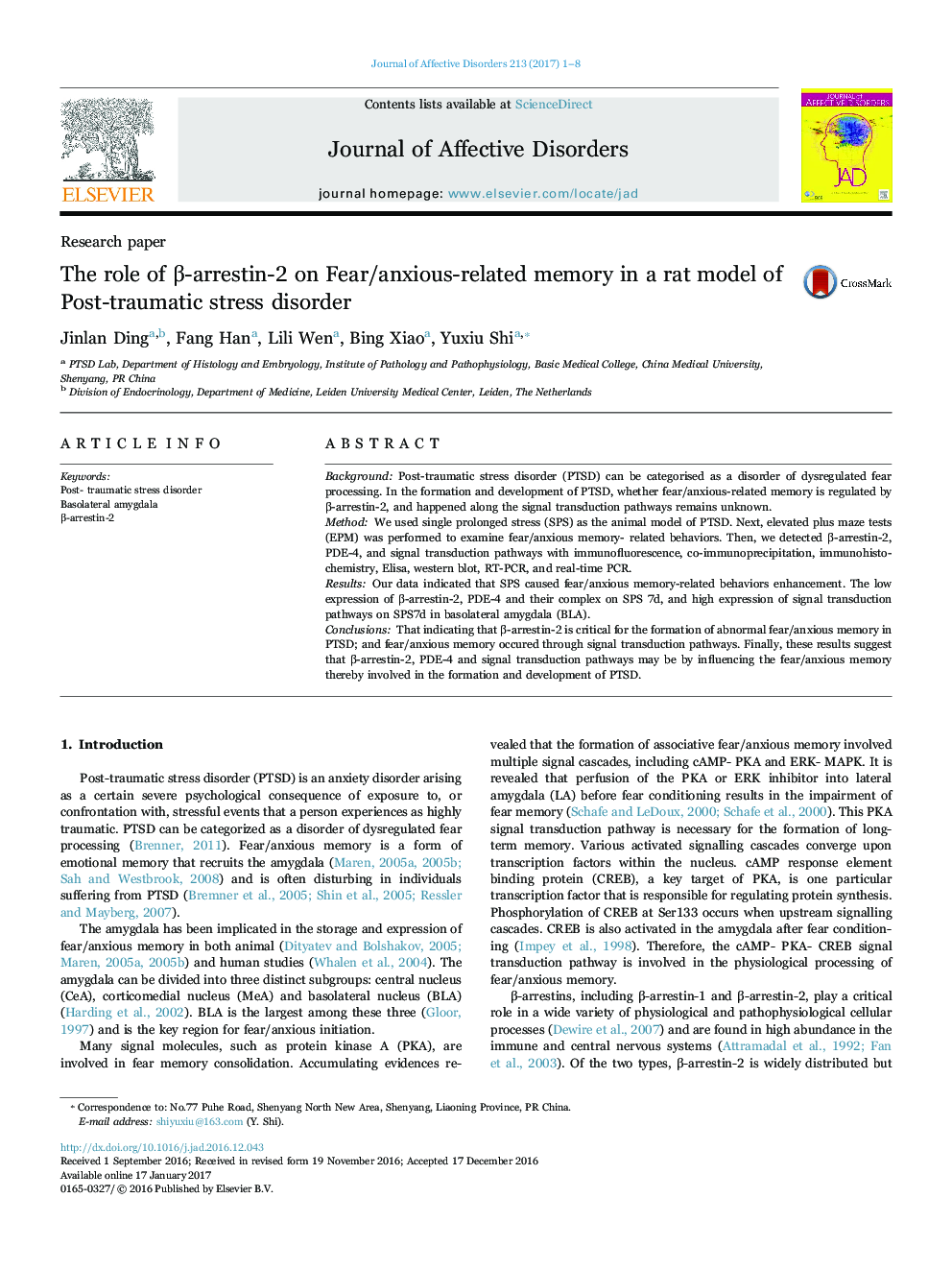| Article ID | Journal | Published Year | Pages | File Type |
|---|---|---|---|---|
| 5722220 | Journal of Affective Disorders | 2017 | 8 Pages |
â¢We used the immunoï¬uorescence, co-immunoprecipitation, western blot and real-time PCR to studied the role of β-arrestin-2 and PDE-4 in Post-traumatic stress disorder for the first time.â¢We found that fear memory occured along the cAMP-PKA- CREB signal transduction pathway and regulated by role of β-arrestin-2 and PDE-4.â¢In order to further clarify the problem, in our further work, we will mark the cell membranes in the immunoï¬uorescent labeling, and make subcellular fractionations of cytoplasm and cytomembrane.
BackgroundPost-traumatic stress disorder (PTSD) can be categorised as a disorder of dysregulated fear processing. In the formation and development of PTSD, whether fear/anxious-related memory is regulated by β-arrestin-2, and happened along the signal transduction pathways remains unknown.MethodWe used single prolonged stress (SPS) as the animal model of PTSD. Next, elevated plus maze tests (EPM) was performed to examine fear/anxious memory- related behaviors. Then, we detected β-arrestin-2, PDE-4, and signal transduction pathways with immunoï¬uorescence, co-immunoprecipitation, immunohistochemistry, Elisa, western blot, RT-PCR, and real-time PCR.ResultsOur data indicated that SPS caused fear/anxious memory-related behaviors enhancement. The low expression of β-arrestin-2, PDE-4 and their complex on SPS 7d, and high expression of signal transduction pathways on SPS7d in basolateral amygdala (BLA).ConclusionsThat indicating that β-arrestin-2 is critical for the formation of abnormal fear/anxious memory in PTSD; and fear/anxious memory occured through signal transduction pathways. Finally, these results suggest that β-arrestin-2, PDE-4 and signal transduction pathways may be by influencing the fear/anxious memory thereby involved in the formation and development of PTSD.
